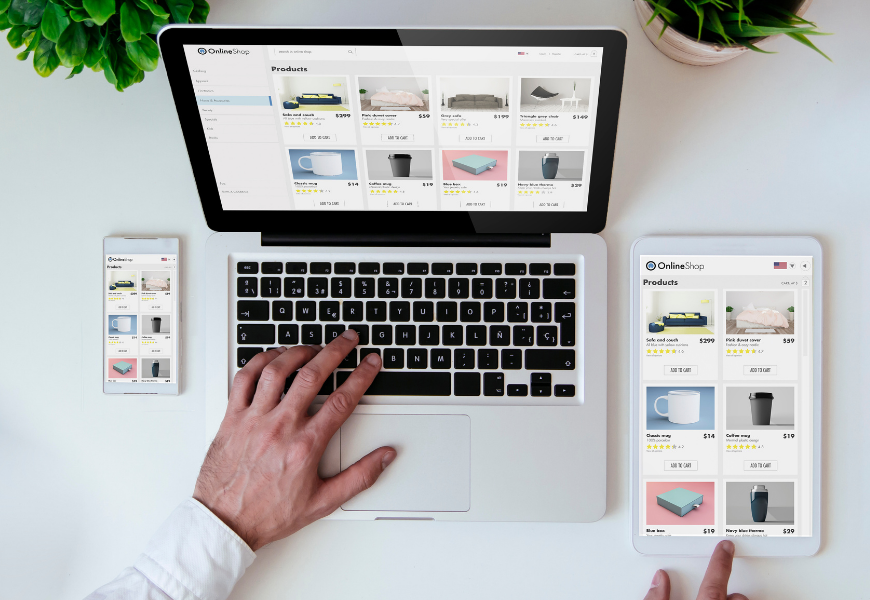
Fast connectivity for a positive customer experience

As more purchasing activity moves online, creating a seamless virtual experience for both customers and employees can become a powerful business differentiator.
Thanks to advances in digital technology, expectations are high when engaging with businesses over the internet, especially now that almost any product or service is just a couple of clicks away.
Most businesses recognise the value of creating a great online experience and are investing in digital transformation initiatives accordingly.

In 2020, a survey of global Chief Information Officers and Information Technology leaders by Harvey Nash and KPMG found creating better digital experiences has been a longstanding business priority – even before COVID-19 created an unprecedented explosion in online activity.
Yet, that’s not to say organisations aren’t responding to this current rise in demand for digital interactions.
Half of Australian respondents to the survey said the pandemic has permanently accelerated digital transformation, with customer experience and engagement a top investment area during this period.
In light of recent events, developing new marketing channels, understanding consumer behaviour, enabling virtual engagements and creating better relationships through digital platforms is now seen as a business imperative.
Connecting the dots for customer experience
According to research by Salesforce, 84 per cent of global customers say the experience a company provides is as important as its products and services.
The same research found two-thirds of customers are willing to pay more for a great experience.
This extends to digital, where 75 per cent of customers expect the companies they engage with to use new technologies, like artificial intelligence (AI), automation and data-driven insights, to create better and more personalised experiences.
Given this, not using digital tools and technologies to provide more value for customers and enhance the digital experience can hinder an organisation’s ability to stand out in an increasingly competitive online market.

There are many reasons why customers may have bad experiences online, but common to them all is a ‘disconnect’.
Consider the following possible scenarios:
- No single view of the customer and their purchasing journey can cause frustration when they engage with different departments or move from online to in-store.
- Disconnected customer data held in various 'silos' across the organisation can lead to missed opportunities for personalisation.
- Slow, patchy or unreliable network connections at point of purchase can result in frustration or possibly even missed sales.
Improving connections with technology
Technology, when fit-for-purpose and deployed well, can help improve connections between organisations and their customers, as well as internally between departments and employees.
Big data and predictive analytics rely on Artificial Intelligence (AI), machine learning and 24/7 access to information to anticipate customer needs, forecast demand and deliver personalised experiences.
Managing the high volume of data for these tasks, often accessed via cloud-based applications in real-time, requires high network capacity and speed.
With virtual interactions still the norm due to the ongoing effects of the pandemic, voice and video continue to hold a prominent role in helping to enable the likes of client consultations, meetings and presentations.
This makes it crucial for organisations in sectors including professional services and health to help minimise disruptions.

And for omnichannel commerce, with physical and virtual stores connected to multiple warehouse locations and third-party logistics and distribution, a real-time view of inventory is vital to help reduce 'out-of-stocks' and unhappy customers.
Central to keeping all of these moving parts working together to drive better experiences for customers is a reliable and robust network infrastructure, like the nbn™ network.
Network connectivity and great customer experiences
In an always-on world, the network is the infrastructure's foundation that serves customers day and night.
It's also important for connecting employees to each other and the range of cloud-based applications that provide information and insights at all stages of the customer journey.
A level of flexibility in their network solution can help enable organisations to scale up or down as required to provide capacity to meet unexpected changes in demand.
With the initial volume rollout complete, the nbn™ network provides the digital backbone for Australian premises in the nbn™ footprint.* Businesses can consider how best to leverage this resource by talking to their preferred service providers about business nbn™ solutions designed to enable the digital needs of businesses and help connect them to customers.^#
The right technology infrastructure, supported by the right network choice, can help provide a framework to keep customers happy now and into the future.
With a wide choice of products and services mere clicks away, meeting the high expectations of customers should be a strategic priority of every organisation.
*nbn's initial volume build completion commitment was that all standard installation premises in Australia would be able to connect to the nbn™ network as at 30 June 2020. This excludes premises in future new developments which would be an ongoing activity for the Company beyond 30 June 2020. It also excludes a small proportion of premises defined as ‘complex connections’ – which includes properties that are difficult to access, culturally significant areas and heritage sites – where connection depends on factors outside nbn™ control such as permission from traditional owners, and where network construction to allow such premises to connect will be an ongoing activity of nbn™ beyond the build completion date.
^ Your experience, including the speeds actually achieved over the nbn™ broadband access network, depends on the nbn™ access network technology and configuration over which services are delivered to your premises, whether you are using the internet during the busy period, and some factors outside of nbn’s control (like your equipment quality, software, chosen broadband plan, signal reception, or how your chosen provider designs its network). Speeds may also be impacted by the number of concurrent users on the nbn™ Fixed Wireless network, including during busy periods. Satellite end customers may also experience latency.
# business nbn™ is not available on the nbn™ fixed wireless network.
